Maybe you’ve heard someone say, “It isn’t so much the heat that gets you; it’s the humidity!” Or, “It’s really hot in the southwest, but it’s a dry heat.” Humidity, or the amount of water vapor in the atmosphere, plays a huge role in how comfortable humans and animals feel in a given area and can even have serious health impacts. So if you’d love to live in Florida but can’t stand the heat, maybe you’d like to check out the least humid community in Florida: Steinhatchee, with an average annual humidity of 69.41%.
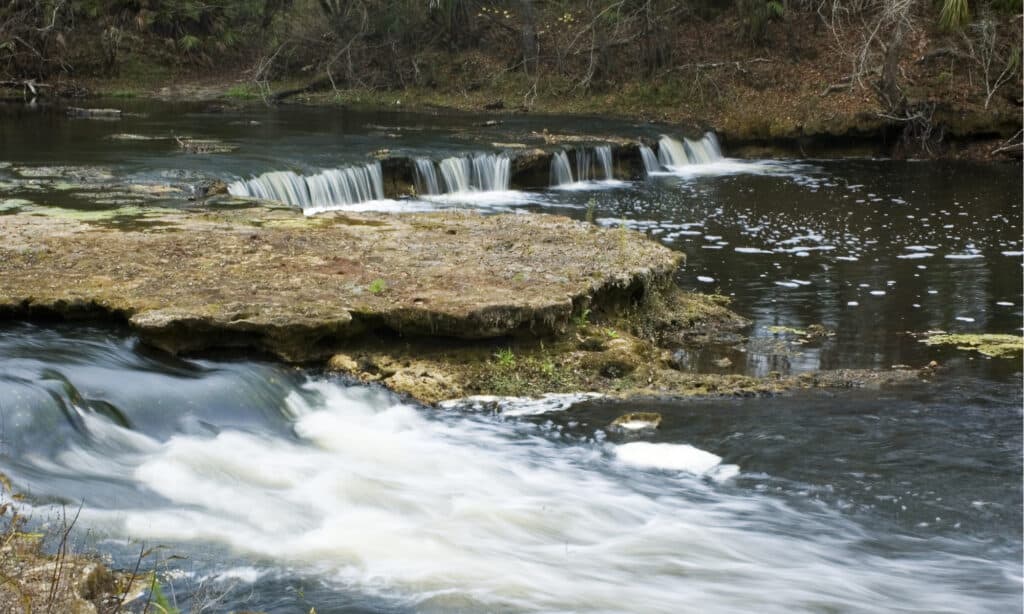
Steinhatchee Falls is a beautiful natural site near the least humid city in Florida.
©Stacey Lynn Payne/Shutterstock.com
Florida’s Climate
Almost completely surrounded by the Gulf of Mexico and the Atlantic Ocean, it’s not surprising that Florida is the most humid state in the United States. Humidity levels are lowest in April, at 67%, and highest in August, the rainiest month, at 79%. Humidity in Florida is dependent on the time of year and rainfall levels, but it also depends on where you are in the state. Usually, coastal areas are more humid than central parts of the state because of warm sea breezes that come in off of the Atlantic Ocean or the Gulf of Mexico. The most humid city in Florida is Key West. The average dew points in Key West can be around 75 in the summer. The northern panhandle is the part of Florida with the lowest humidity levels, ranging from 55-71%.
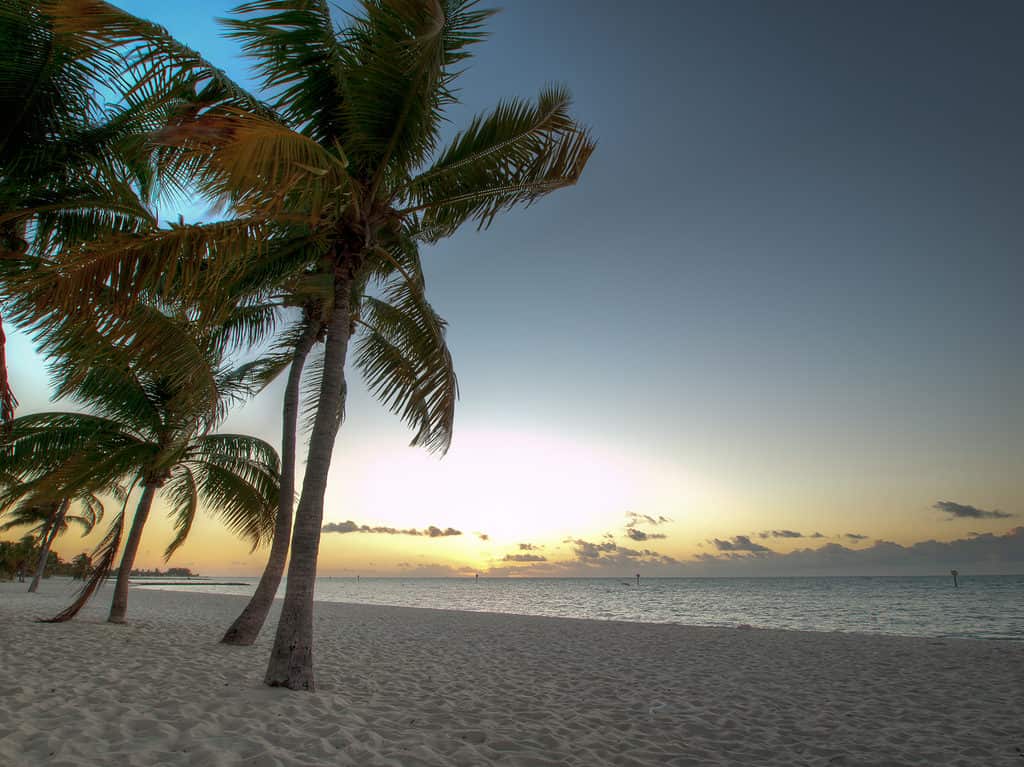
Key West, Florida is the state’s most humid city.
©Arina P Habich/Shutterstock.com
Steinhatchee: Florida’s Least Humid Community
Steinhatchee is a community on the Gulf of Mexico in northwestern Florida, about 71 miles due west of Gainesville. Here’s a few interesting facts to help you get to know this paradise-within-paradise:
Where Is Steinhatchee Located on a Map?
A resort town, Steinhatchee lies on the banks of the river of the same name, which flows into the Gulf of Mexico. It sits directly opposite the port town of Jena on the other side of the Steinhatchee River.
Facts About Steinhatchee
- Its name comes from the Creek Native American language and means “river person.”
- Today about 1,050 people live there.
- The main industries are producing cedar wood for pencils, fishing, crabbing, and scalloping.
- Temperatures in Steinhatchee range as low as 39°F in January to a high of 92°F in July.
- Its annual average precipitation is 59.6 inches.
- At an average annual humidity of 69.41% Steinhatchee is, on average, the least humid community in Florida.
Ecological Preserves Near Steinhatchee
Steinhatchee is in the middle of quite a few natural preserves and conservation areas, including:
- Big Bend Seagrasses Aquatic Preserve
- Steinhatchee Conservation Area
- Lower Steinhatchee Conservation Area
- Big Bend Wildlife Management Area
- Steinhatchee Springs Wildlife Management Area
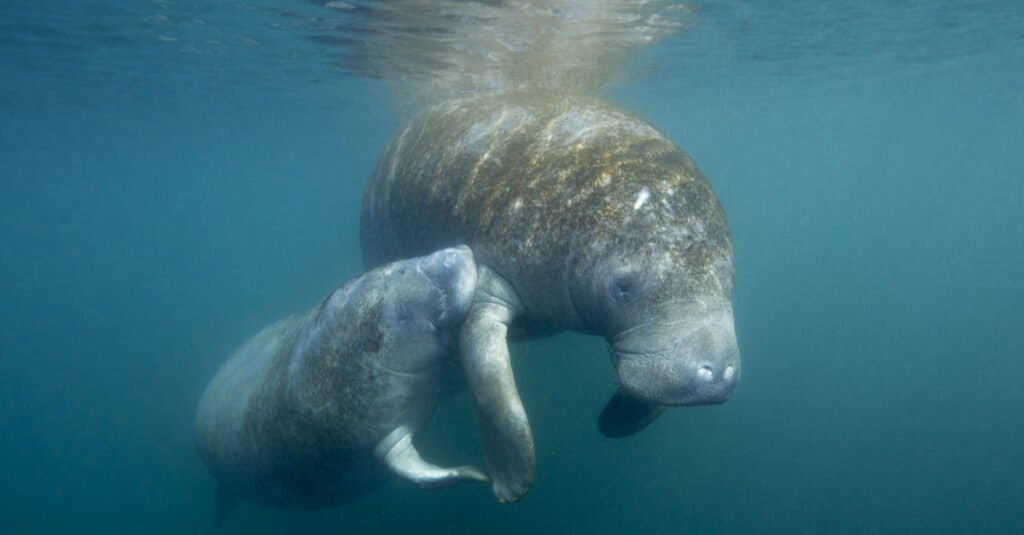
In season, manatees migrate up the Gulf and Atlantic coasts of Florida.
©272007413/Shutterstock.com
Wildlife Near Steinhatchee
The Steinhatchee Conservation Area includes a 28-mile-long river that runs through pine forest and cypress swamps, dripping with Spanish moss. The area is abundant in wildlife, including white-tailed deer, feral hogs, bobcats, gray squirrels, rabbits, raccoons, opossums, armadillos, beavers, coyotes, skunks, and nutria.
Migratory birds frequent the Steinhatchee area, including frigatebirds and the American white pelican. Egrets are an especially iconic Florida species. Gamebirds like quail and turkey are plentiful. Butterflies thrive in the local climate. You might spot swallowtails, gossamer-winged butterflies, metalmarks, brush-footed butterflies, and skippers. Steinhatchee is especially noted for its commercial shellfish industry, including clams, oysters, shrimp, blue crab, and scallops.
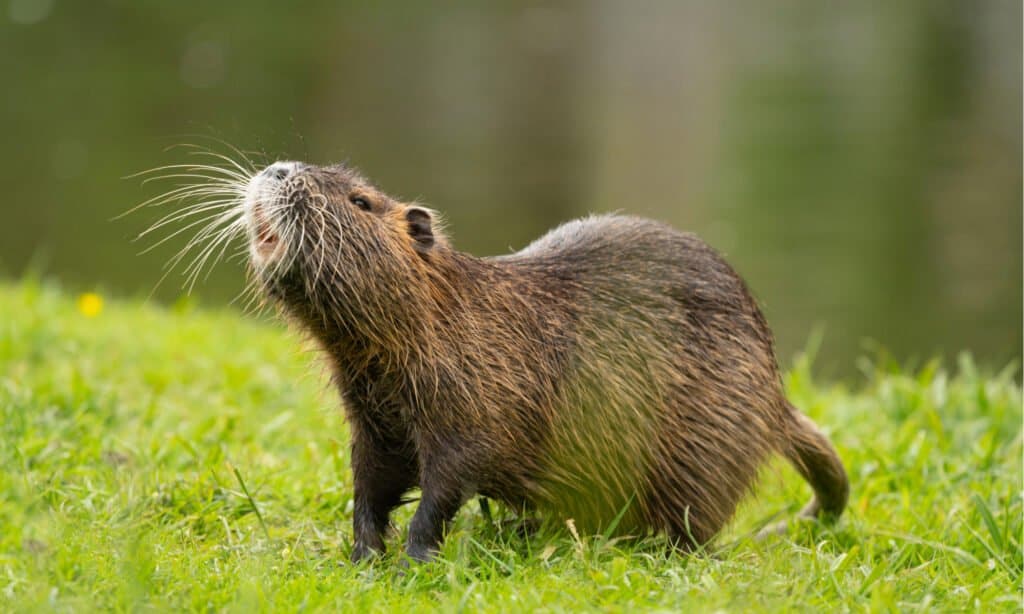
Nutria is a large invasive rodent species found in many parts of the South, including Steinhatchee.
©Barbora Polivkova/Shutterstock.com
How Does Humidity Affect People and Pets?
High humidity can make people and pets feel uncomfortable and irritable. If cooling isn’t available at night, humidity can seriously disrupt sleep. Over time this can stress the body and lead to serious negative health repercussions.
Humidity also contributes to allergies by increasing the growth of mold that releases allergy-causing spores. Humid air can make it difficult for people with asthma or other respiratory issues to breathe easily.
The most serious repercussion of high humidity is, ironically, dehydration. We sweat more in high heat and humidity, just like sitting in a sauna at the gym. The loss of water and electrolytes must be replaced, or you can experience fatigue, muscle cramps, fainting, heat exhaustion, or heat stroke, which can be fatal.
For pets, a special issue is that humid conditions can contribute to skin irritation and infections in animals with long fur. Dogs pant to release warm moisture from their lungs. In humid conditions, the moisture doesn’t evaporate, so panting does not cool the dog down.
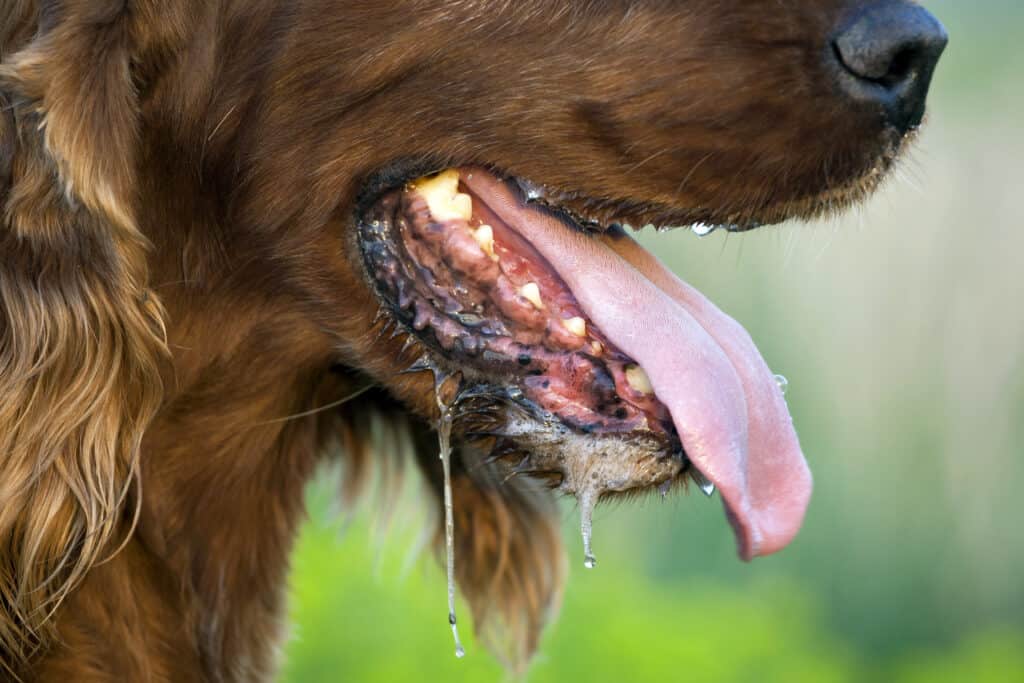
Dogs pant to release warm moisture from their lungs. In high humidity, the moisture will not evaporate, and the dog cannot cool down.
©Reddogs/Shutterstock.com
How Can You Deal with High Humidity?
Here are some things you can do to protect yourself and your pets in high humidity, where ever you live:
- Stay hydrated, and make sure your animals have constant access to clean, cool water.
- Stay in air conditioning, or keep windows and doors open and run fans for ventilation.
- Avoid outdoor activities at times of peak humidity.
- Wear lightweight, breathable clothing made of natural fibers like cotton.
- Make sure your pet has a cool, shady place to rest.
- Groom your pet regularly to remove excess hair.
- See medical professionals for yourself, family members, or pets if any of you show signs of heat exhaustion.
And, of course, the ultimate way to deal with high humidity is to move to an area with lower humidity. Steinhatchee, anyone?
The photo featured at the top of this post is © Alexander Lukatskiy/Shutterstock.com
Thank you for reading! Have some feedback for us? Contact the AZ Animals editorial team.






